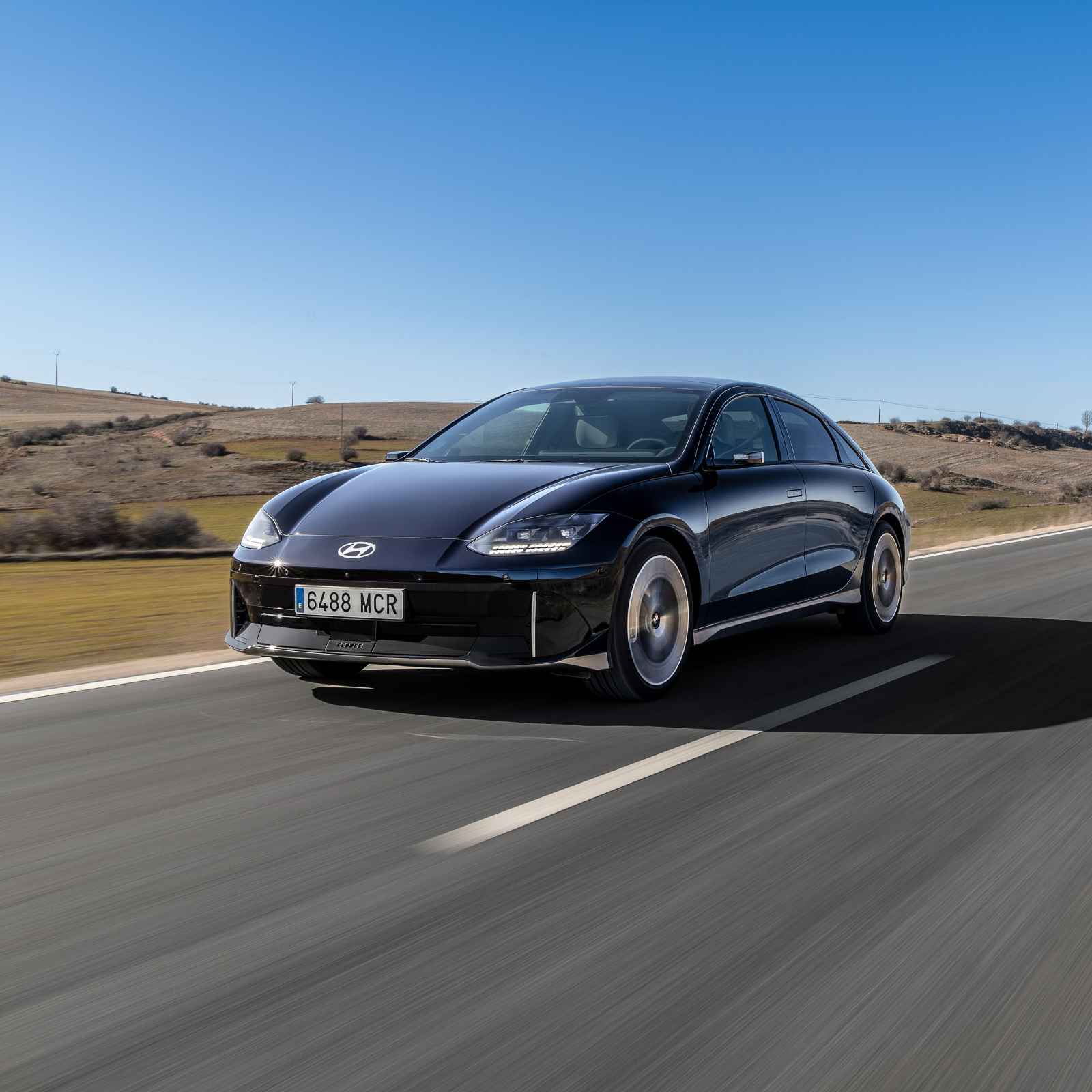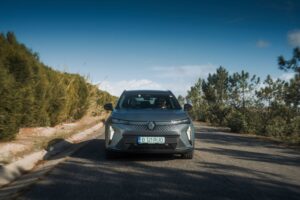Many characters would fit in an article about the rise of the Hyundai brand in the last decade. And among these, there would also be room for the way the South Koreans (together with their brothers from Kia) have moved in what we can call the post-infantile period of electric cars.
Next, we will only talk about the Ioniq 6, which came to complete the presence of the Ioniq 5 on the market under the Ioniq umbrella, officially inaugurated in 2020. And an Ioniq 7 will come, but that’s another story already.
The Hyundai Ioniq 6 will accompany us in EUROCHARGE by Schaeffler, a tour in which we will cross Europe with 8 electric cars from Bucharest to Lisbon and back to Bucharest.
Cocktail of Silhouettes
Regarding the lines of the Ioniq 6, a design study, of course, had a major say: the Prophecy EV Concept. The emphasis fell heavily on aerodynamic optimization at the expense of angular design, and this is easy to deduce at first glance, especially if we bring into discussion the shapes of the Ioniq 5.
For the Ioniq 6, Hyundai sculpted as much as it could into the body towards a drag coefficient of 0.21, lower than any model in the range – ever. In fact, the value determined the South Koreans to call their product Electrified Streamliner (yes, that’s how Ioniq 6 is referred to in press releases).
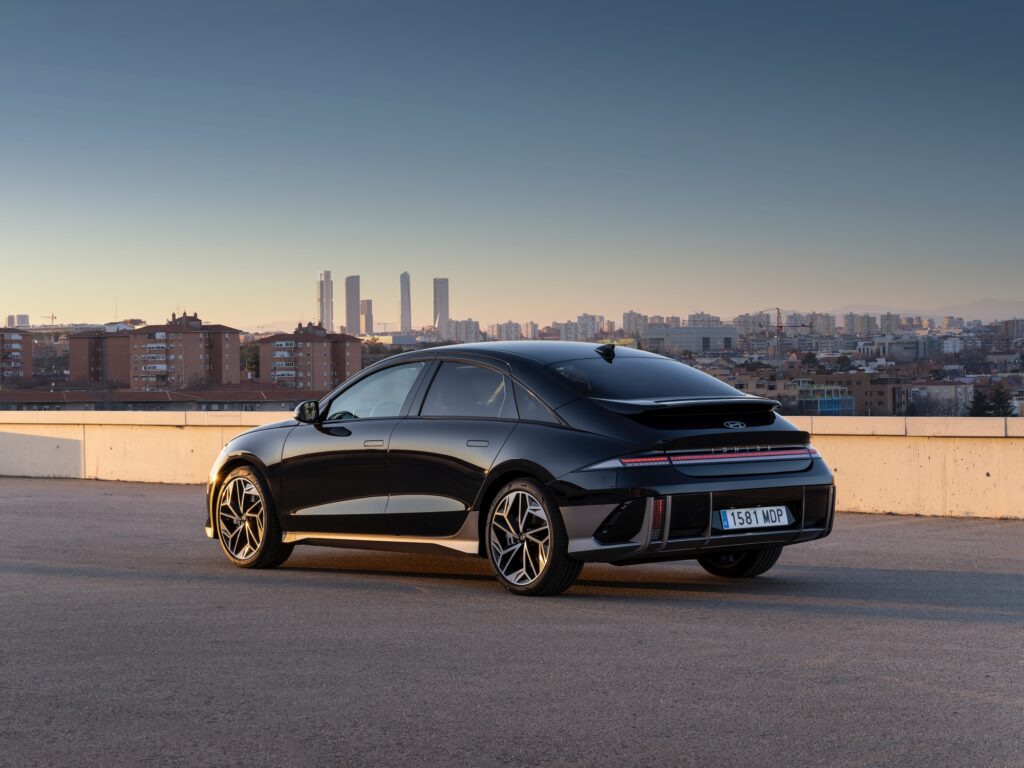
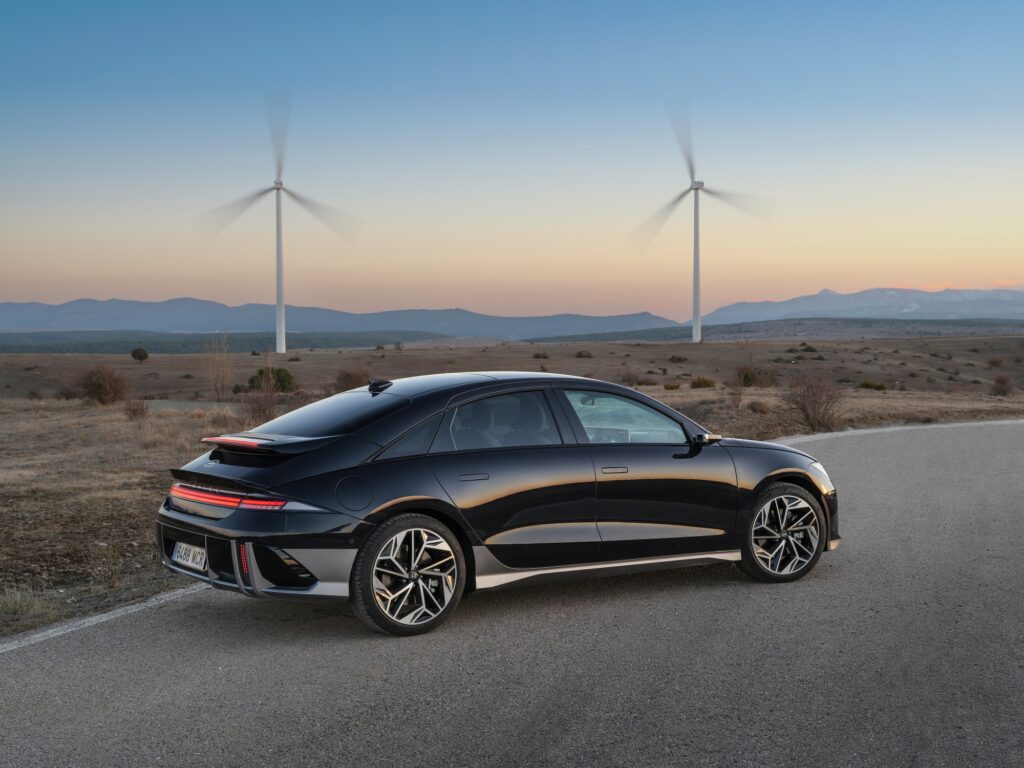
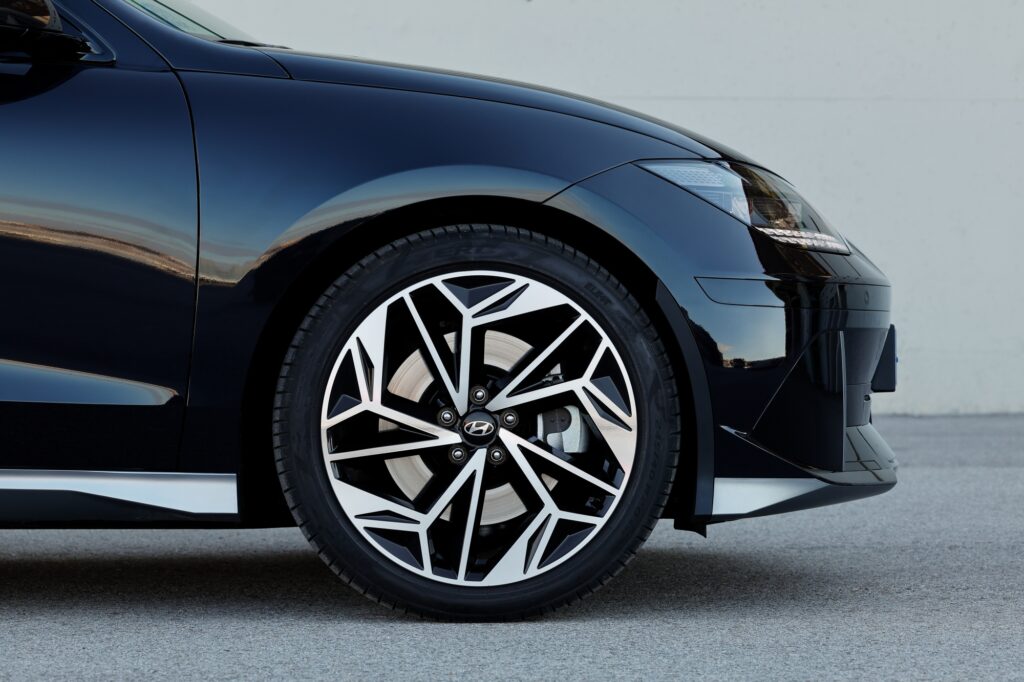
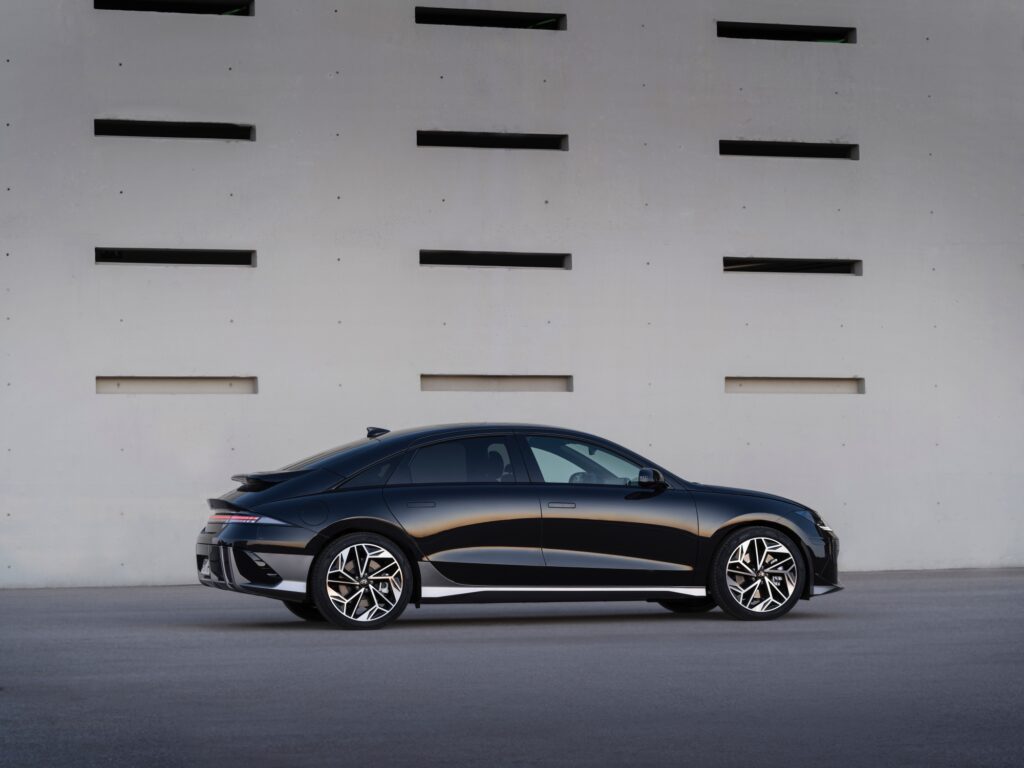
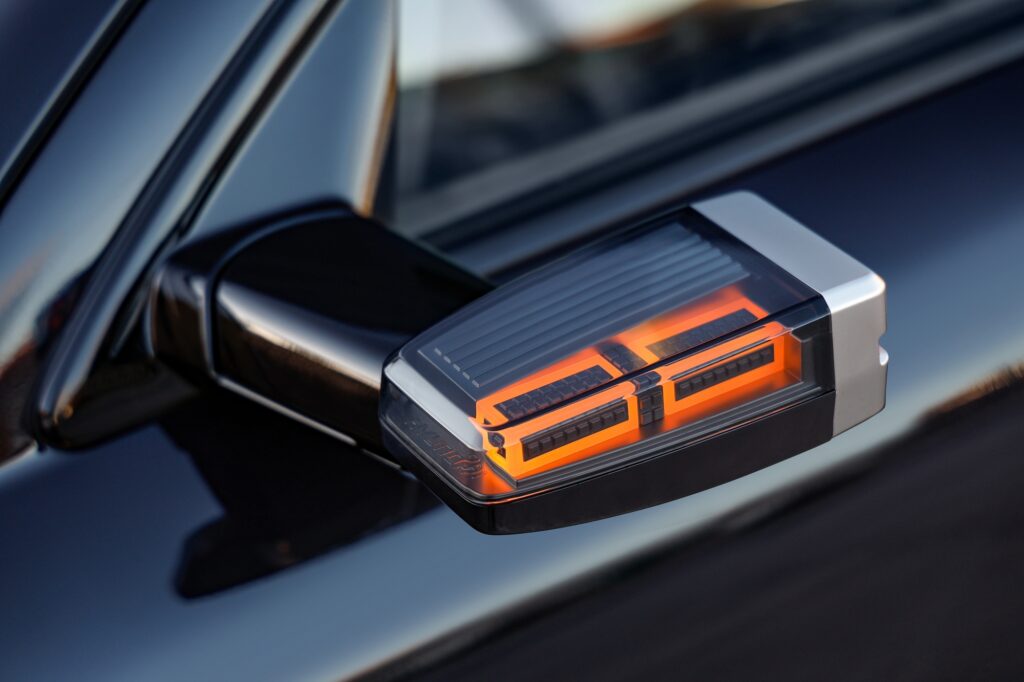
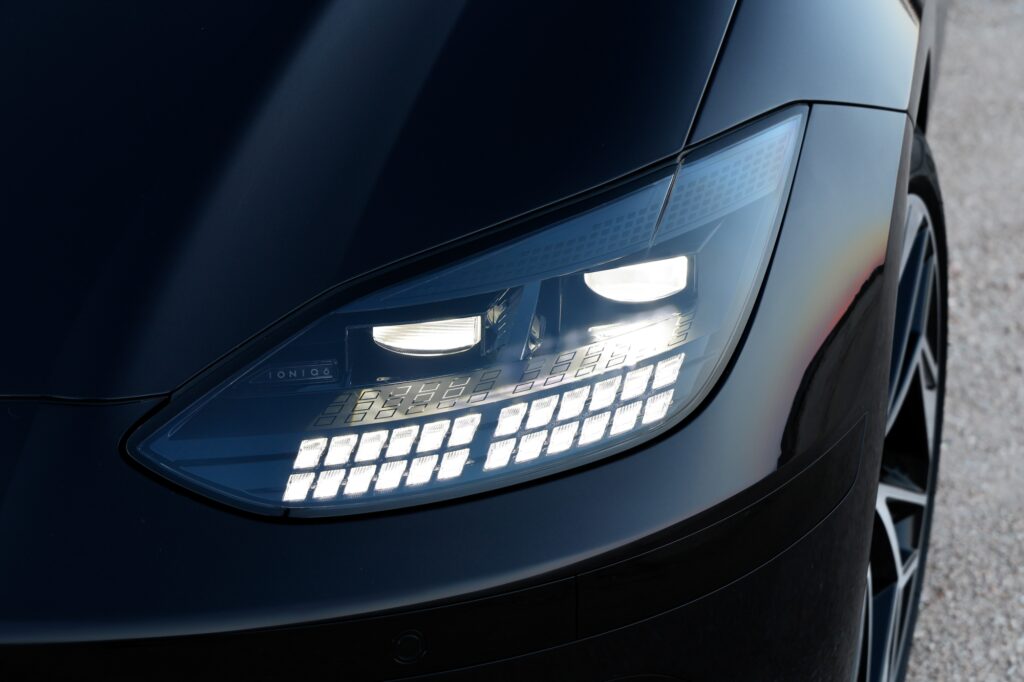
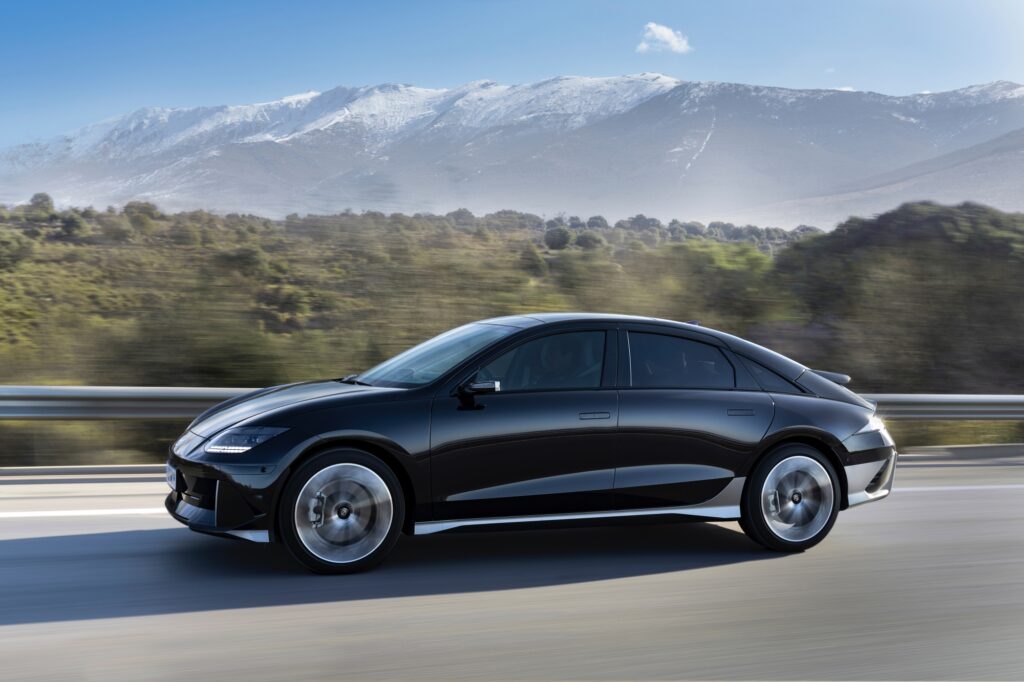
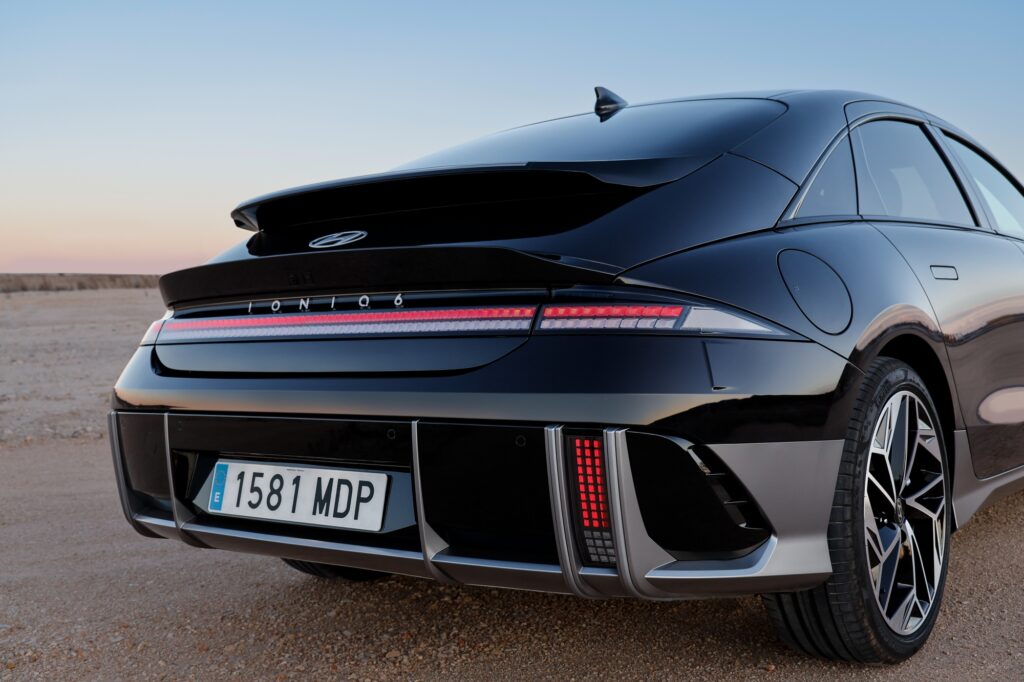
I’m not going to give my opinion on what the Ioniq 6 actually looks like, as they say: beauty is in the eye of the beholder. Or the customer, why not? The idea to remember is that the way the Ioniq 6 looks also fulfills aerodynamic functions, whether it’s the small notches that allow the air to form a fluid curtain around the wheels or the active front grille.
In concrete terms, we have the following dimensions: 4,855 mm long, 1,880 mm wide and 1,495 mm high, with a wheelbase of 2,950 mm.
Standard Range and Long Range
Two batteries are currently available for the Hyundai Ioniq 6: one has a capacity of 53 kWh, the other of 77.4 kWh. It should also be noted that the Ioniq 6 is developed on the E-GMP (Electric-Global Modular Platform) architecture at 800 volts. This allows charging powers of up to 240 kW from DC sources, where there is a favorable infrastructure. At AC sources, the maximum charging power is 11 kW.
The 53 kWh battery can be coupled with a single electric motor, located on the rear axle – from where it only turns the rear wheels. The engine produces 151 horsepower and 350 Newton-meters, enough for a 0-100 sprint paid in 8.8 seconds.
The large battery, the 77.4 kWh one, can in turn be coupled with a single electric motor (also on the rear axle). However, this one is a bit more powerful – 229 horsepower compared to 151. But the torque remains the same – 350 Newton-meters, while the duration of the charge from 0 to 100 km/h is shortened to 7.4 seconds.
The large battery can also be integrated into a system with two electric motors (and all-wheel drive), which practically results in the most powerful Ioniq 6: 325 horsepower and 605 Newton-meters, for only 5.1 seconds from 0 to 100 km/h.
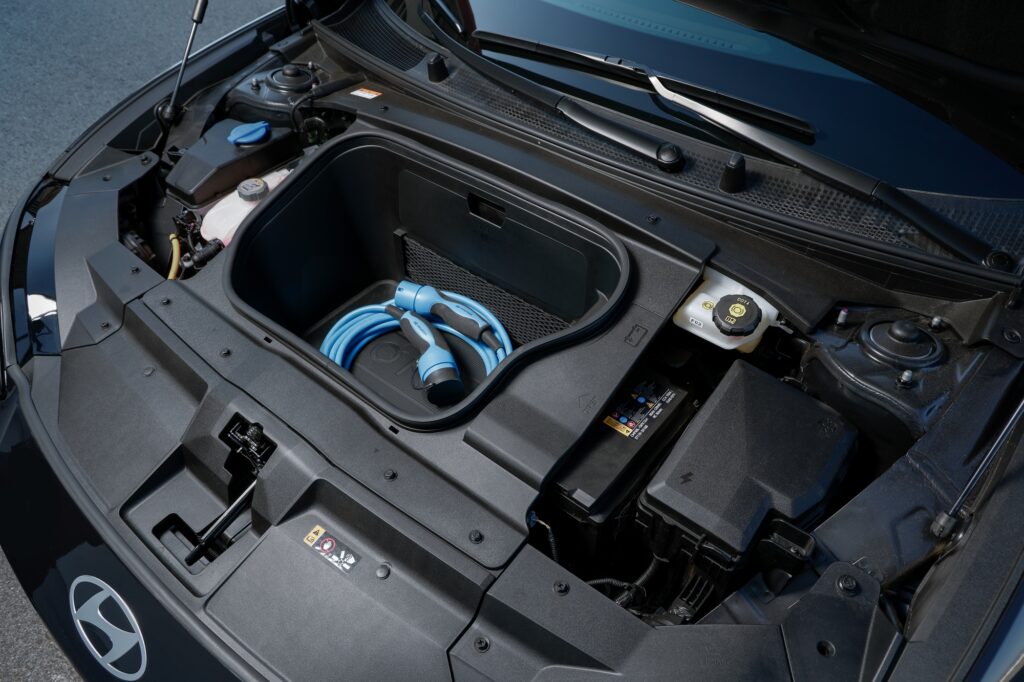
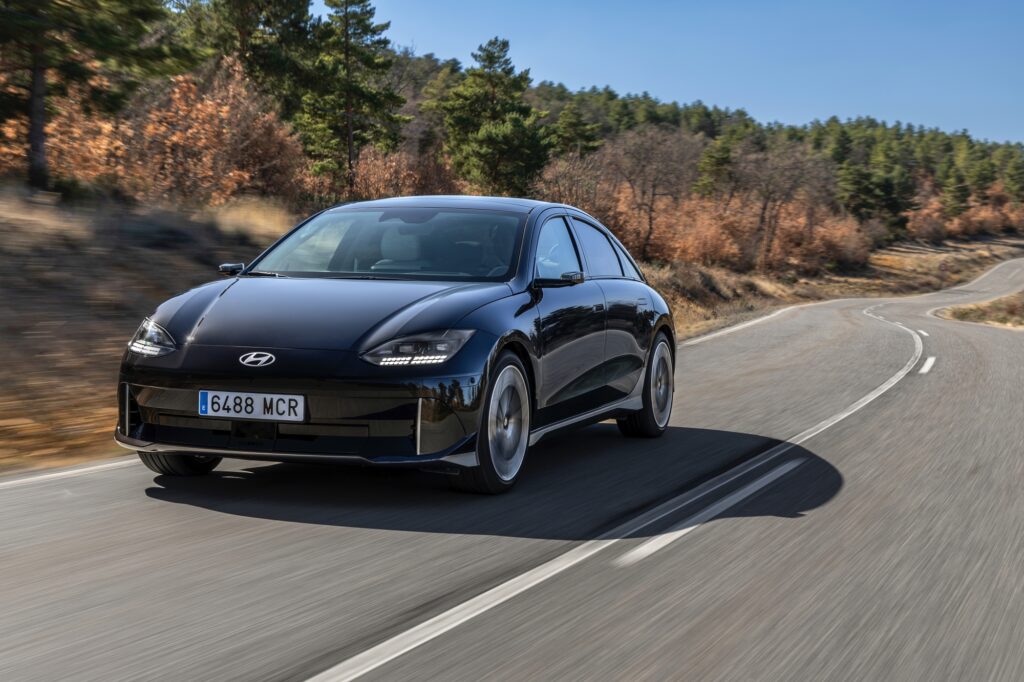
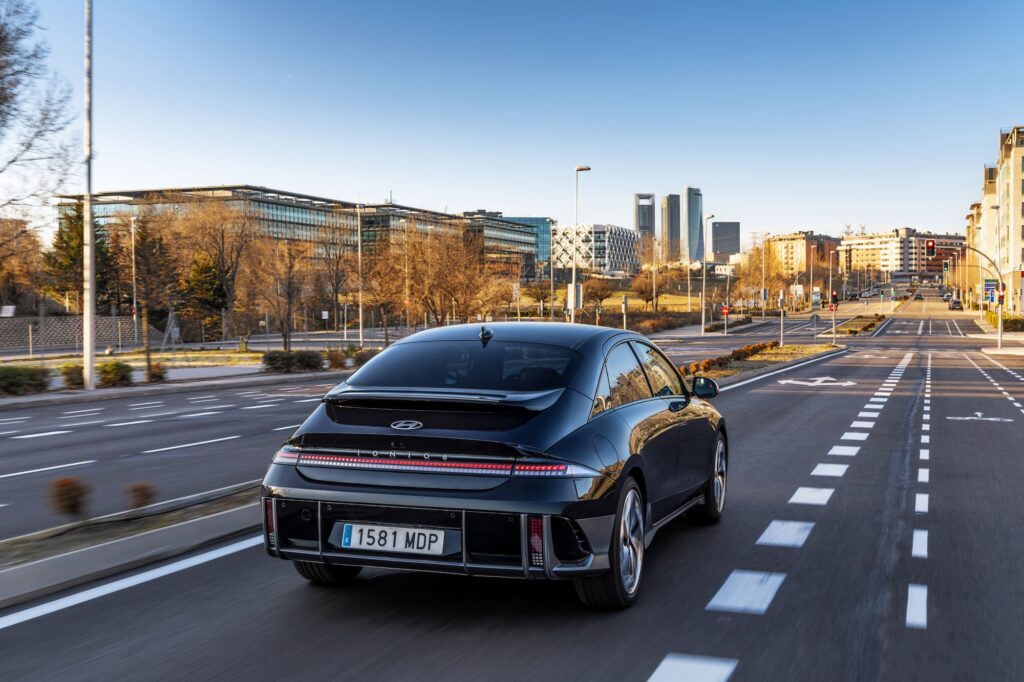
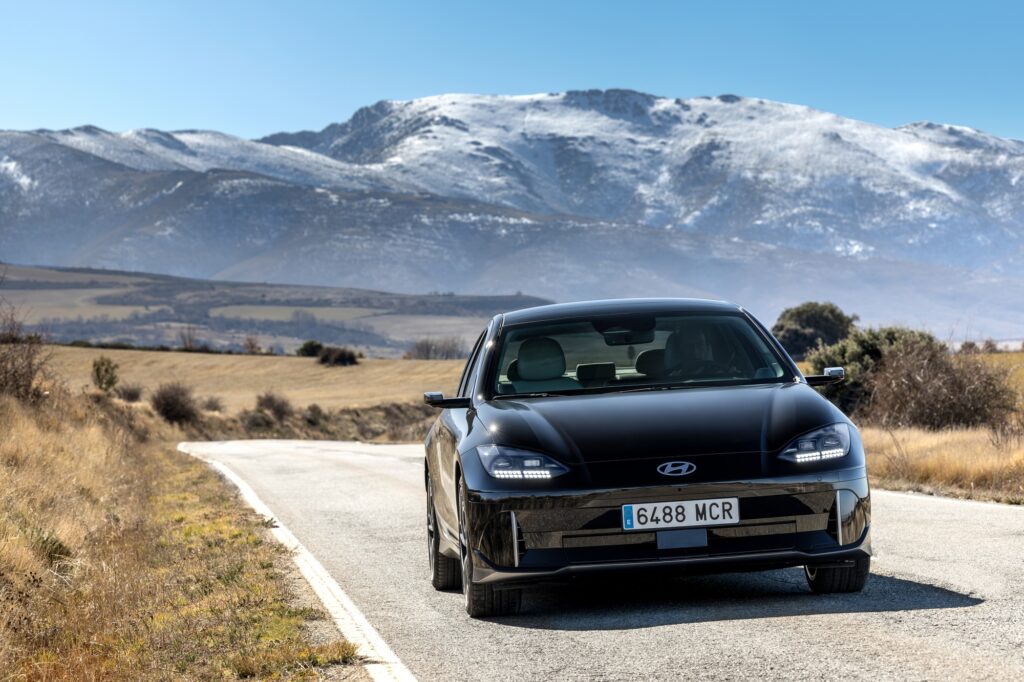
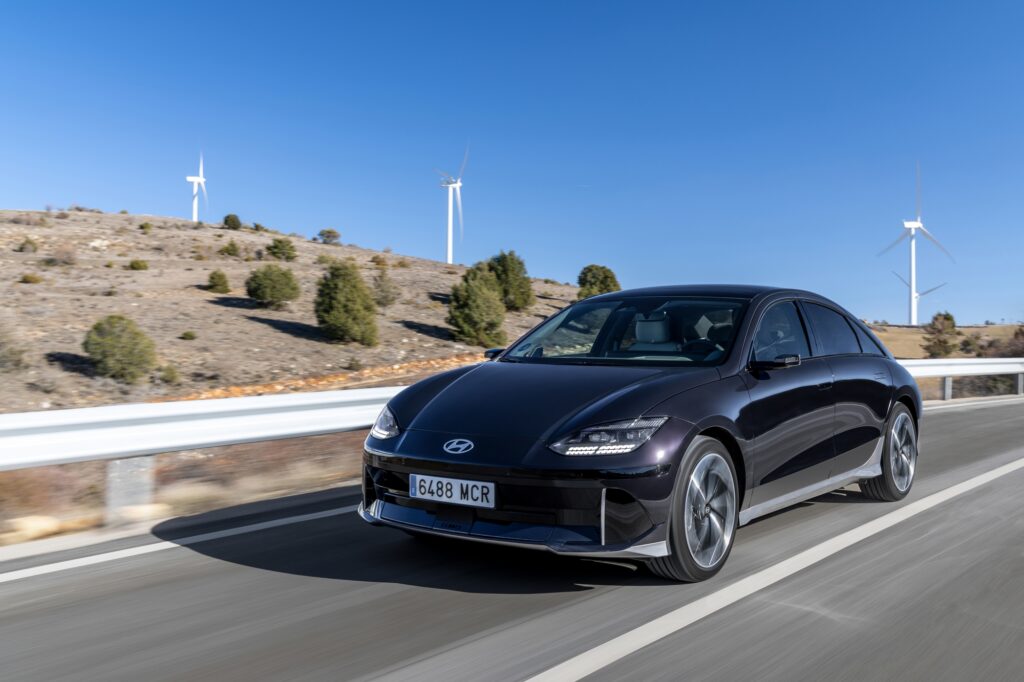
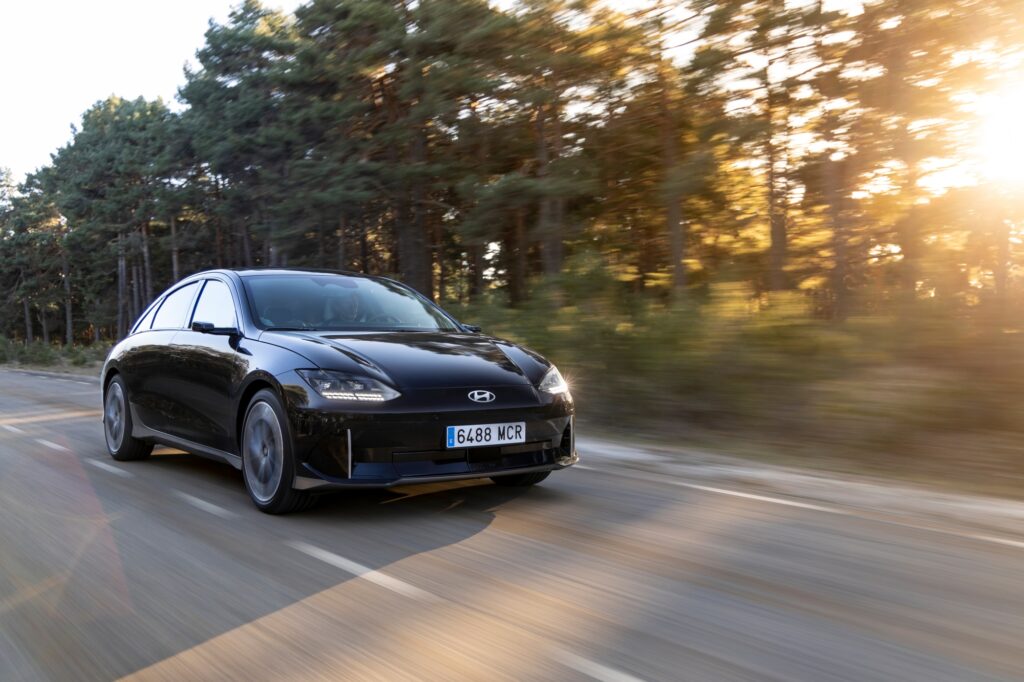

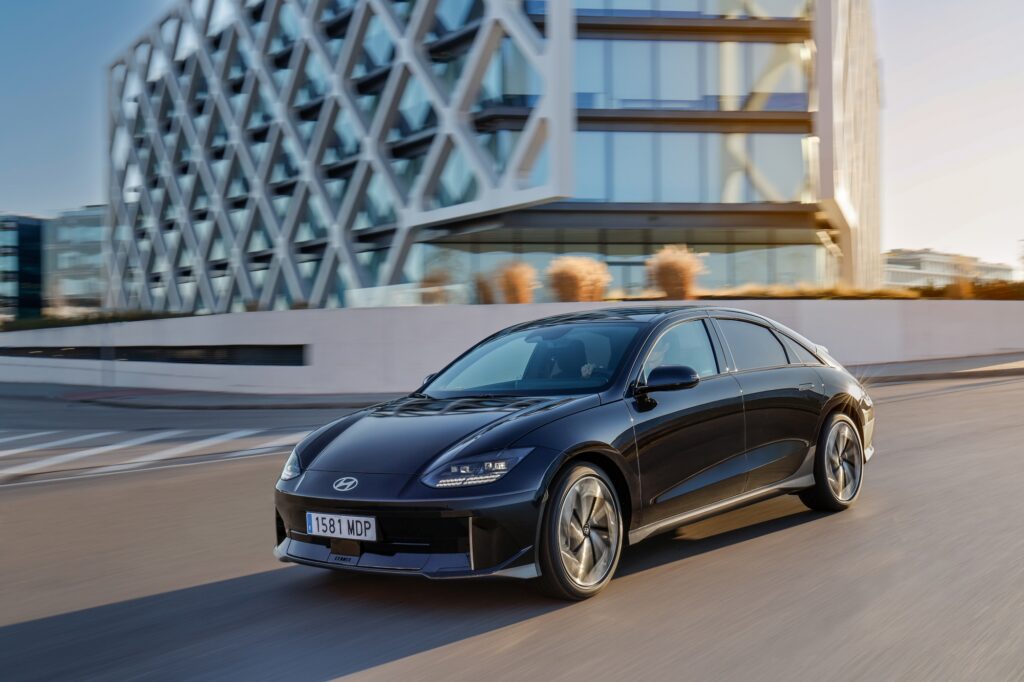
The maximum range that the Ioniq 6 is capable of, at least on paper, appears in the configuration with the 77.4 kWh battery and a single electric motor, with 18-inch rims: 614 km, according to the WLTP testing cycle, in the context of a theoretical average consumption of 14.3 kWh/100 km.
The same configuration with 20-inch rims has a theoretical range estimated at 545 km WLTP.
For the version with the 53 kWh battery and 18-inch rims (the only ones available in this case), the average consumption is estimated at 13.9 kWh/100 km, which corresponds to a range of 429 km WLTP.
At the same time, an Ioniq 6 with a 77.4 kWh battery and two electric motors consumes 15.1 kWh/100 km with 18-inch rims, respectively 16.9 kWh/100 km with 20-inch rims. In this context, the maximum theoretical range is 583, respectively 519 km WLTP.
Alongside us in EUROCHARGE by Schaeffler we will have an Ioniq 6 2WD in Premium equipment (basic), with a 77.4 kWh battery and a 229 horsepower electric motor.
Clean and Digitalized Space
If you’ve ever been in an Ioniq 5, the Ioniq 6 doesn’t have much to surprise you with. Visually speaking, the two interiors are similar, with the necessary improvements made to the latter. The instrument panel is a 12.3-inch digital screen, the same size as the central screen that serves the multimedia system.
Optionally, customers can choose a Bose Premium Sound sound system with eight speakers, including a subwoofer. At the same time, the Ioniq 6 is the first Hyundai model that can receive complex updates in the over-the-air system (from software updates for driver assistance systems to some that target, for example, the battery). The technological suite is completed by an induction charging area for mobile phones, four USB C and one USB A ports, connectivity via Apple CarPlay and Android Auto and voice recognition.
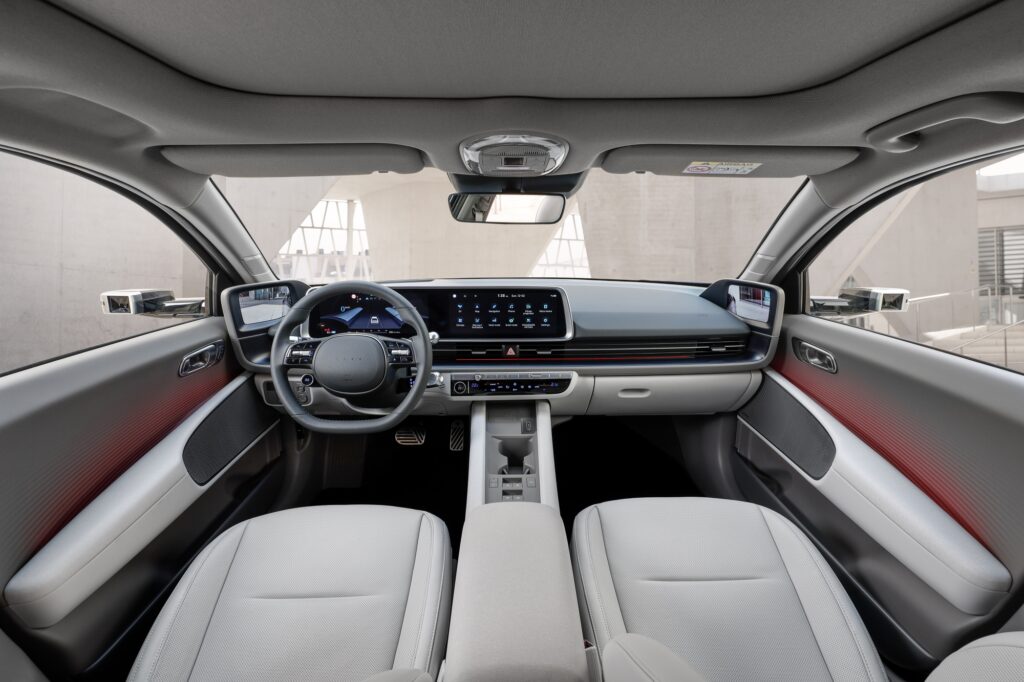
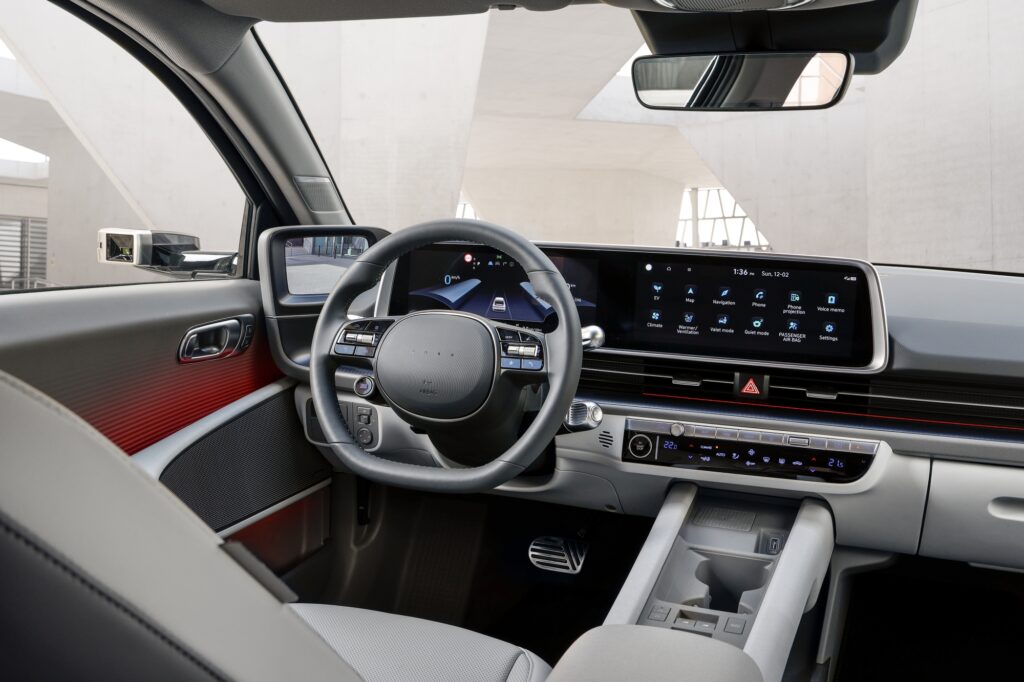
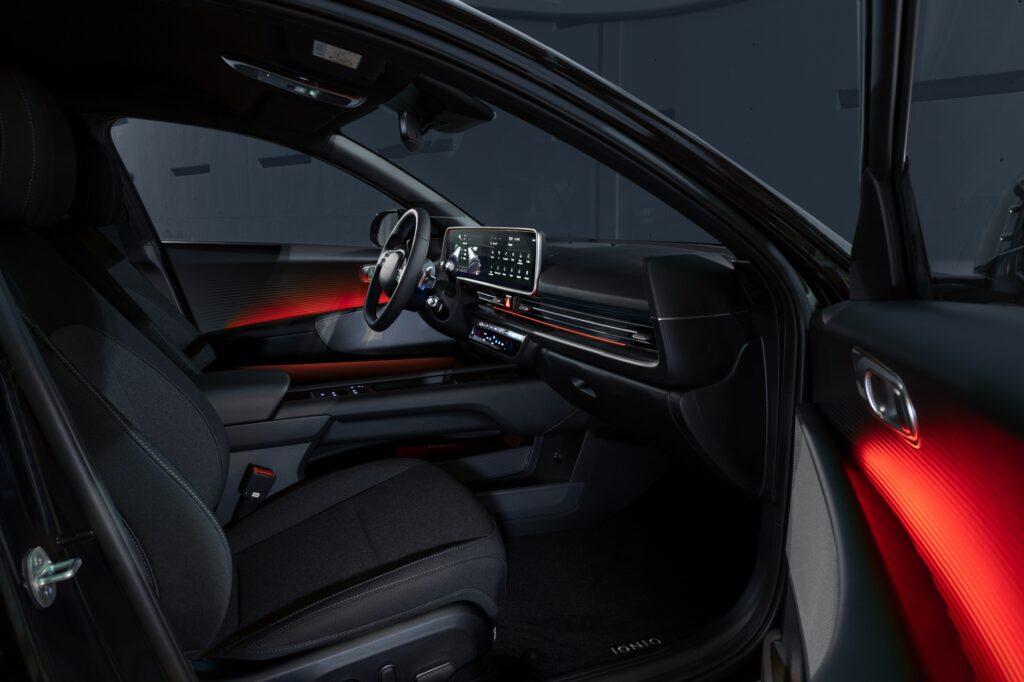
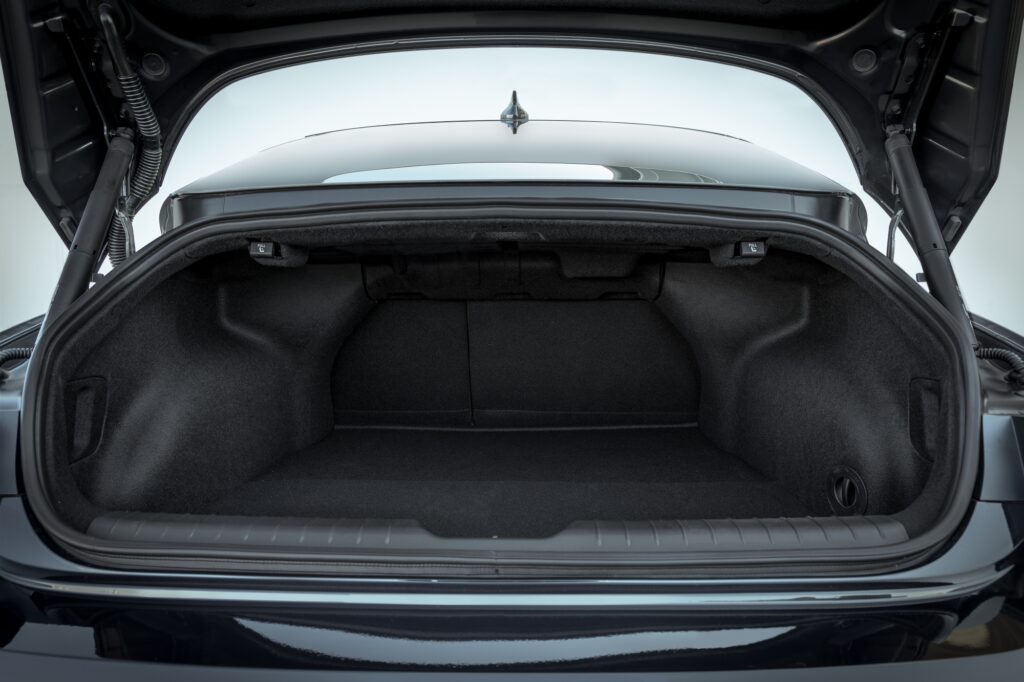
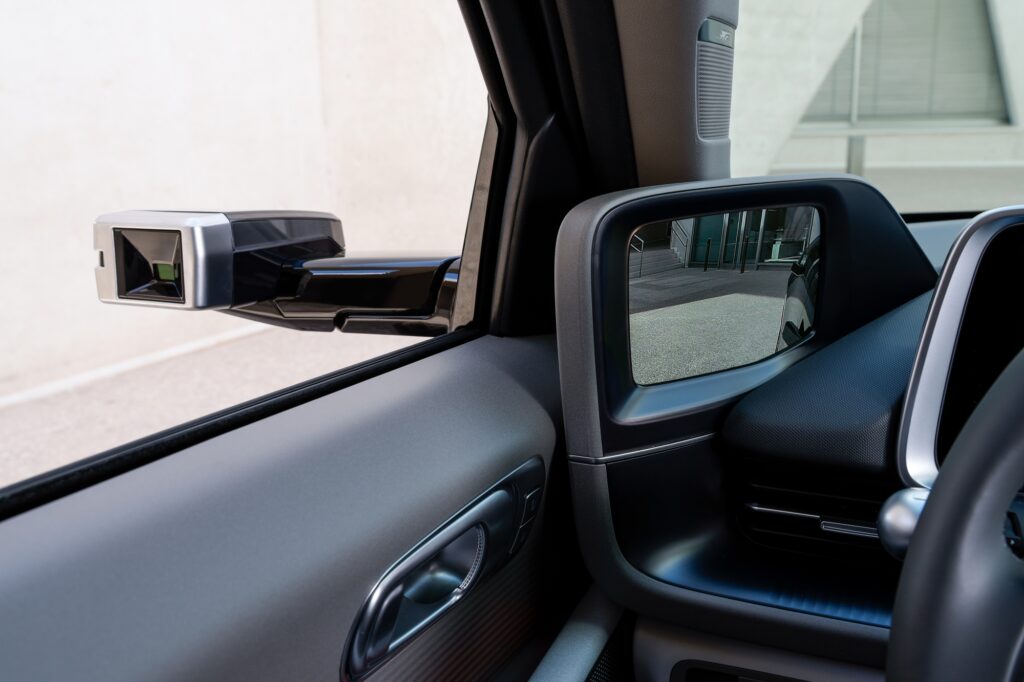
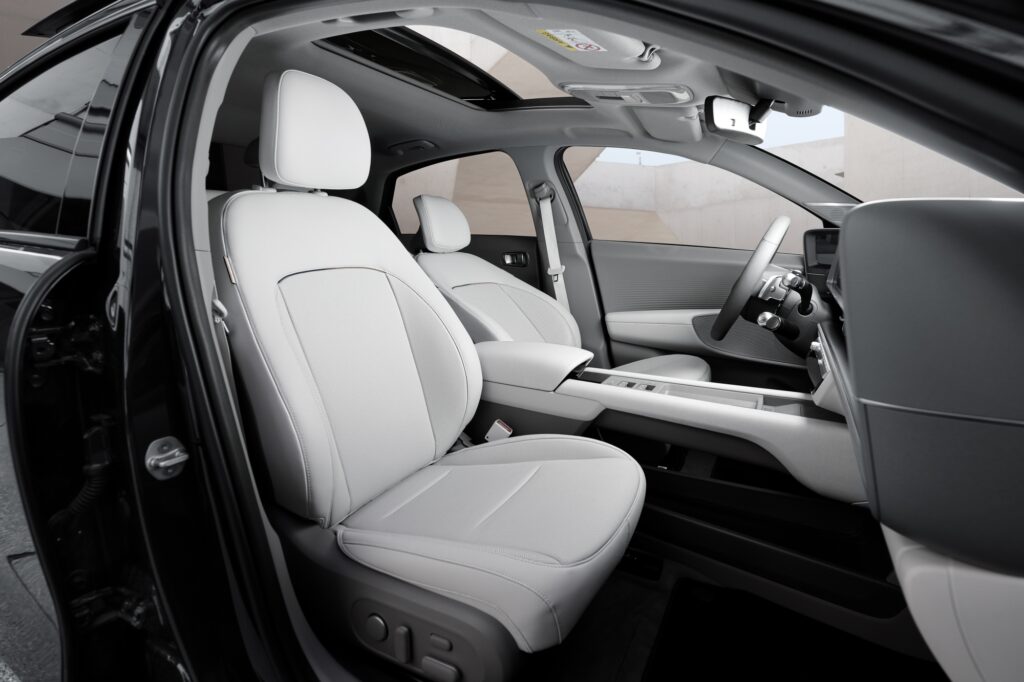
The EV Performance Tune-up function takes care of the customization of the drivetrain, practically a program that allows selecting a preset driving mode for the steering (Sport, Normal), for the power delivered by the system (Maximum, Normal, Minimum), the response of the accelerator pedal (High, Normal, Low) and the calibration of the all-wheel drive system, where applicable (AWD, AUTO AWD, 2WD).
Hyundai boasts a sustainable approach to the materials used inside, including ecological leather developed with extracts from plant fiber, plastic that comes from recycled PETs and paint derived from vegetable oils. Moreover, the foot mats contain plastic from recycled fishing nets.
Regarding the practical side, we have the following: the storage space reaches 401 liters in the trunk and 45 liters in the frunk for the Ioniq 6 RWD model. For the Ioniq 6 AWD, the volume in the frunk is only 14.5 liters.
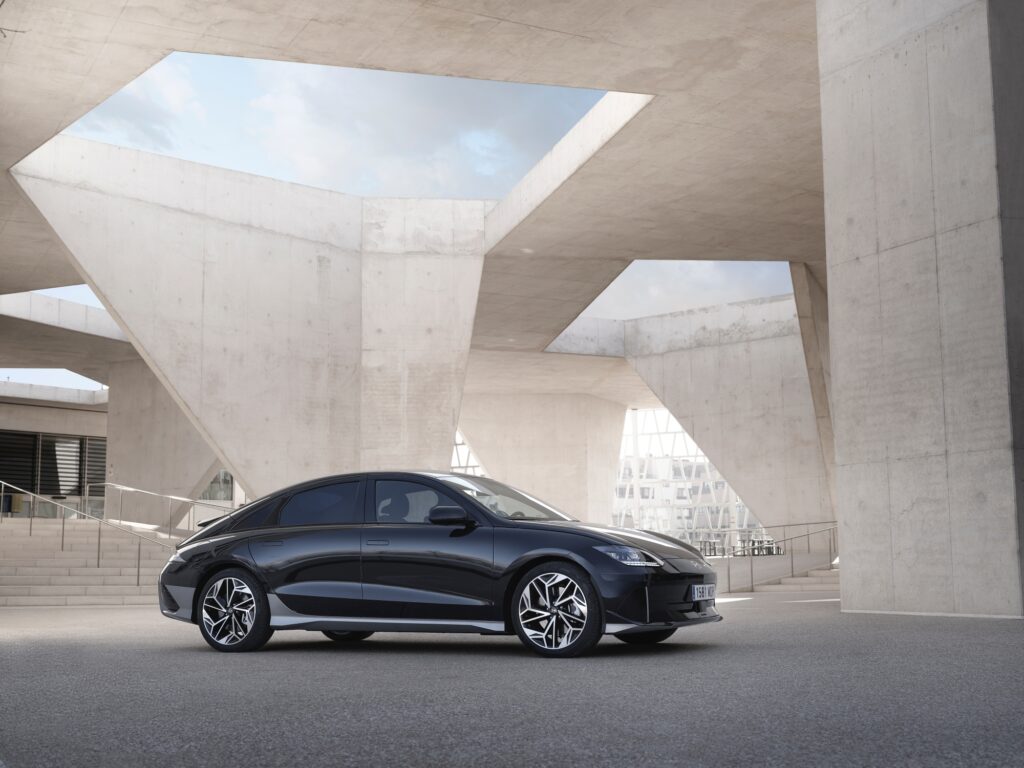
Technical Specifications of the Car from EUROCHARGE by Schaeffler

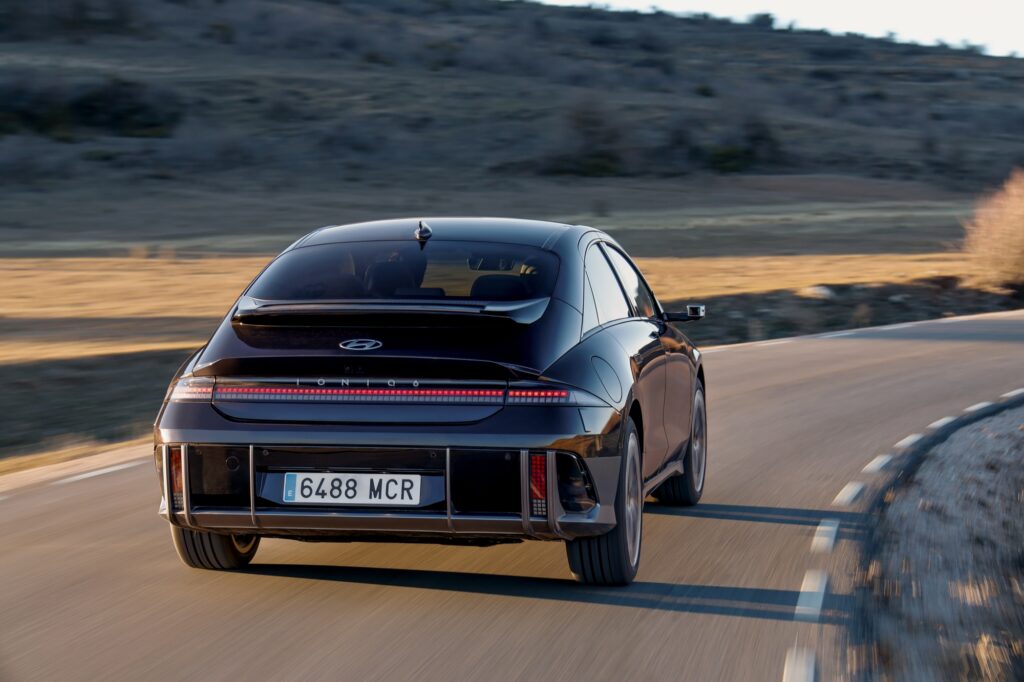
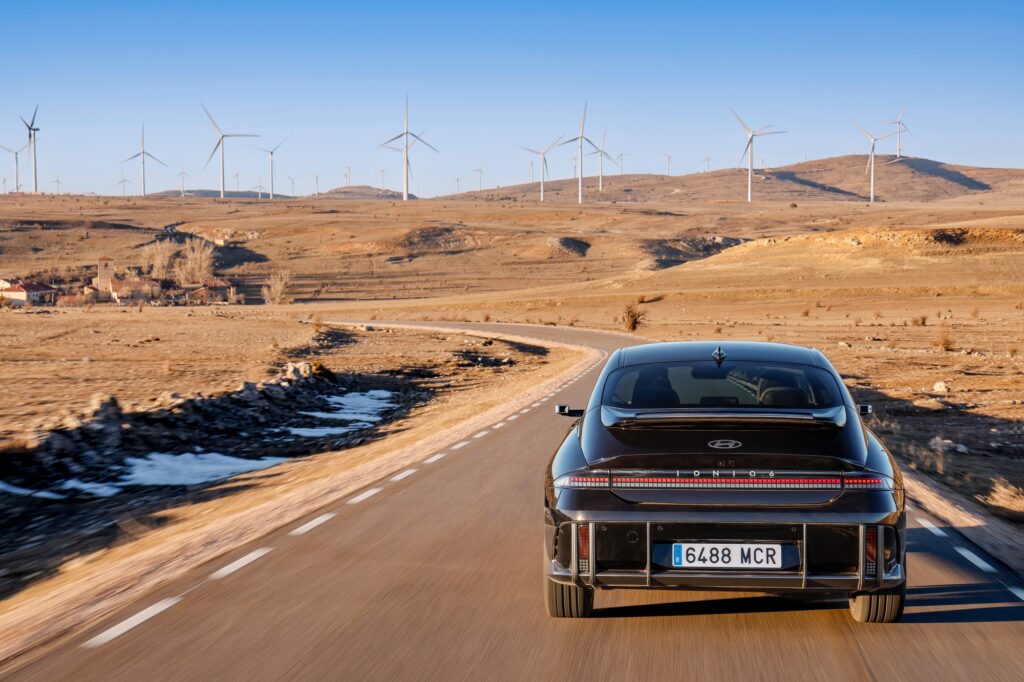


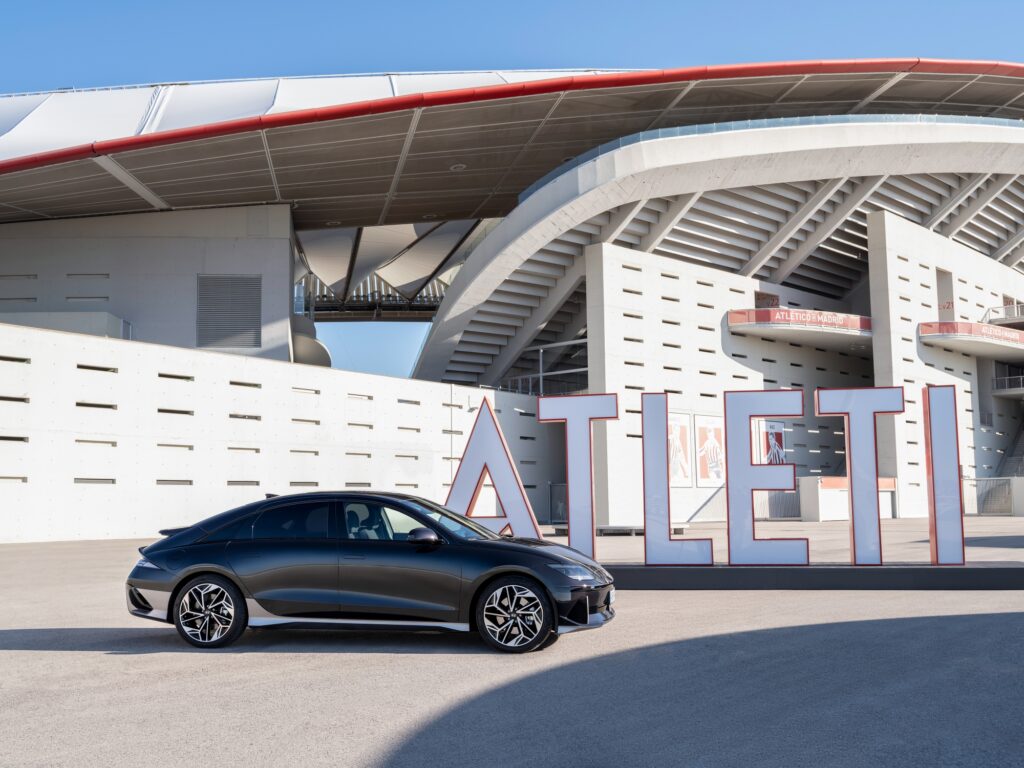

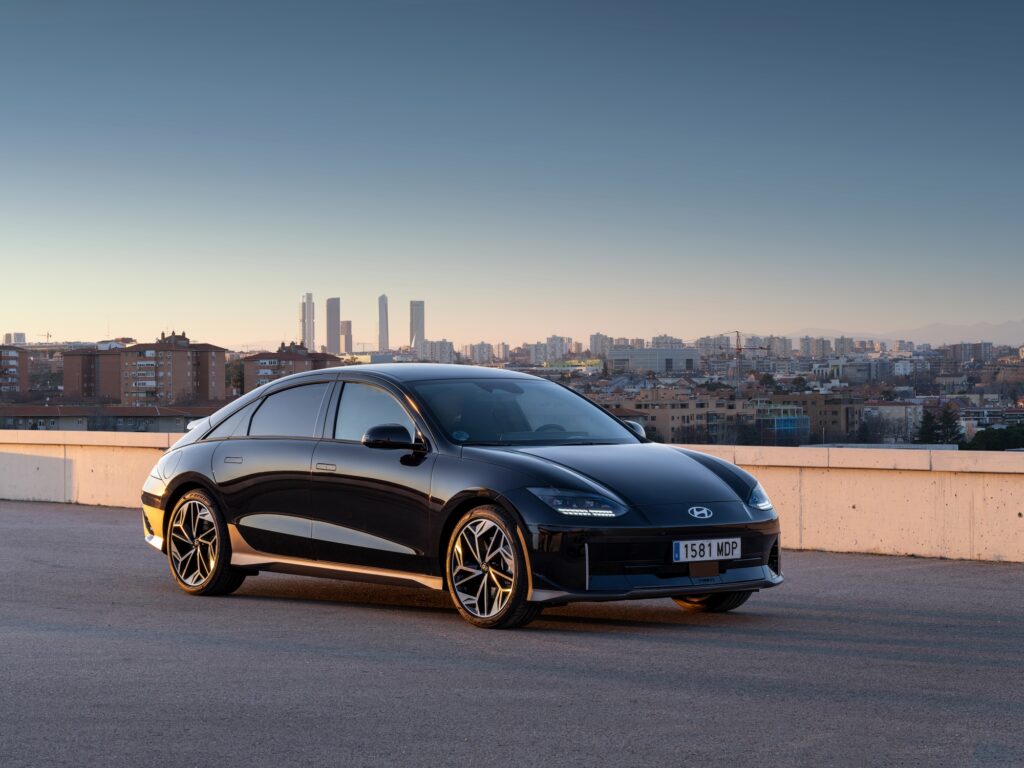


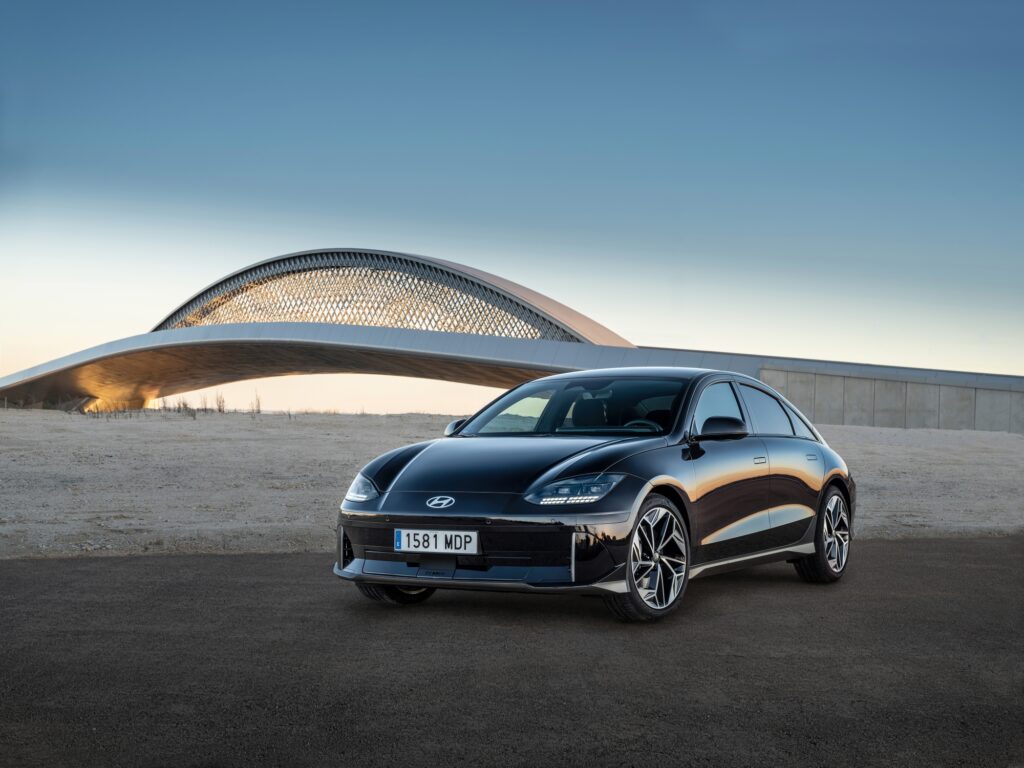
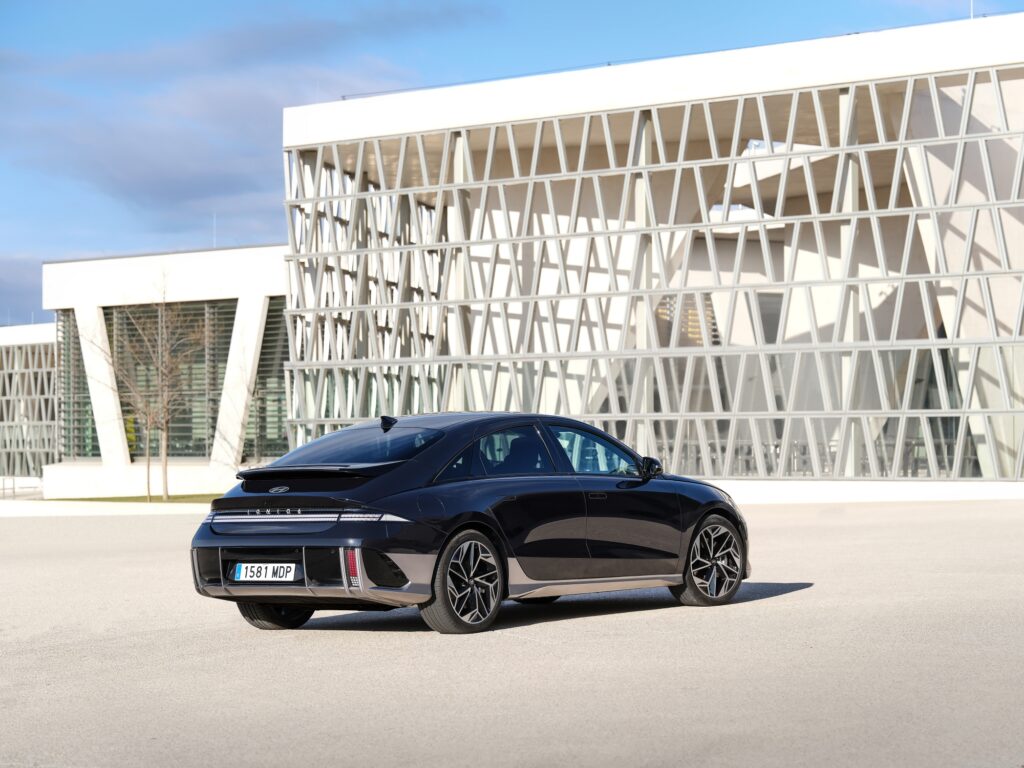


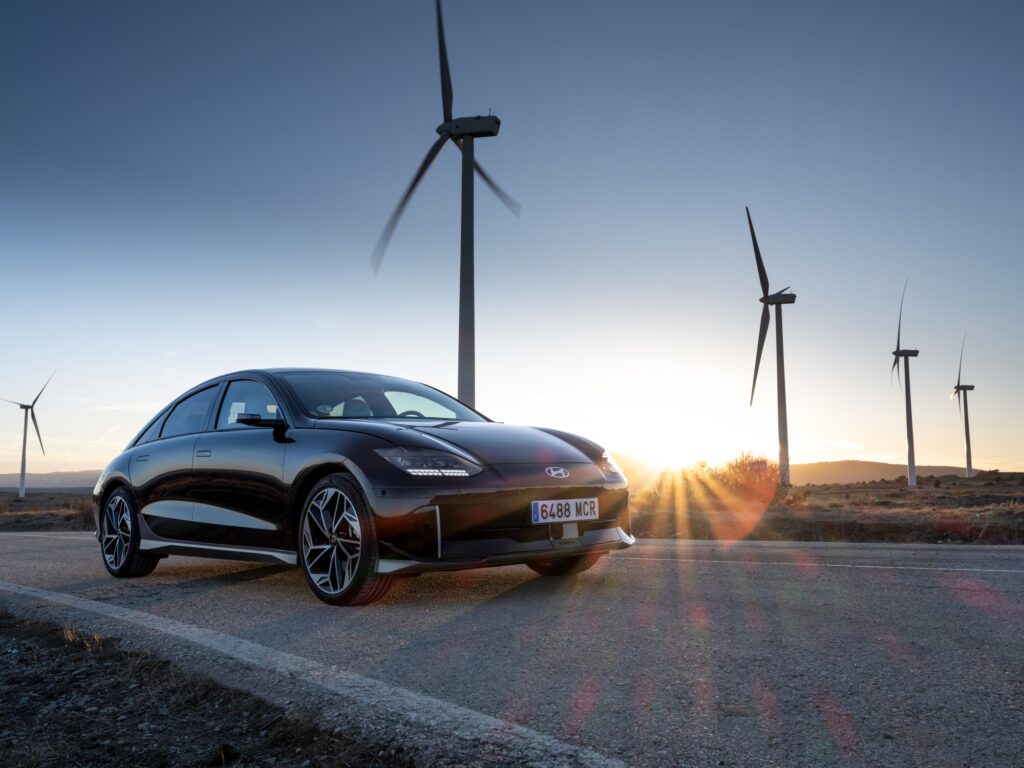

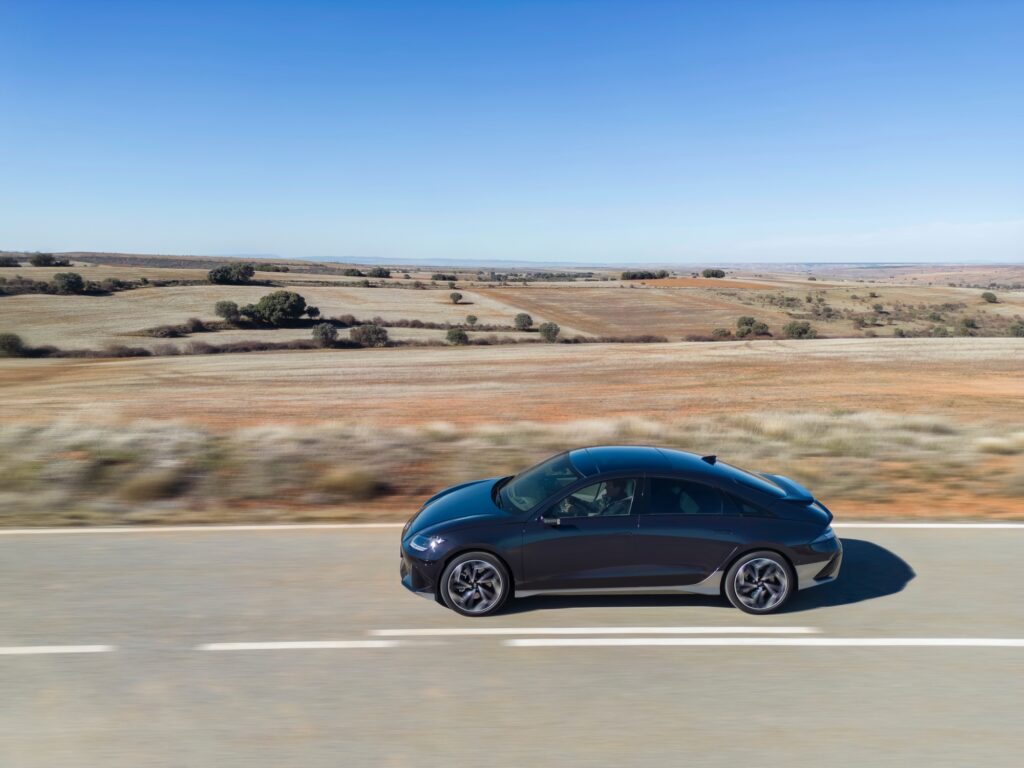
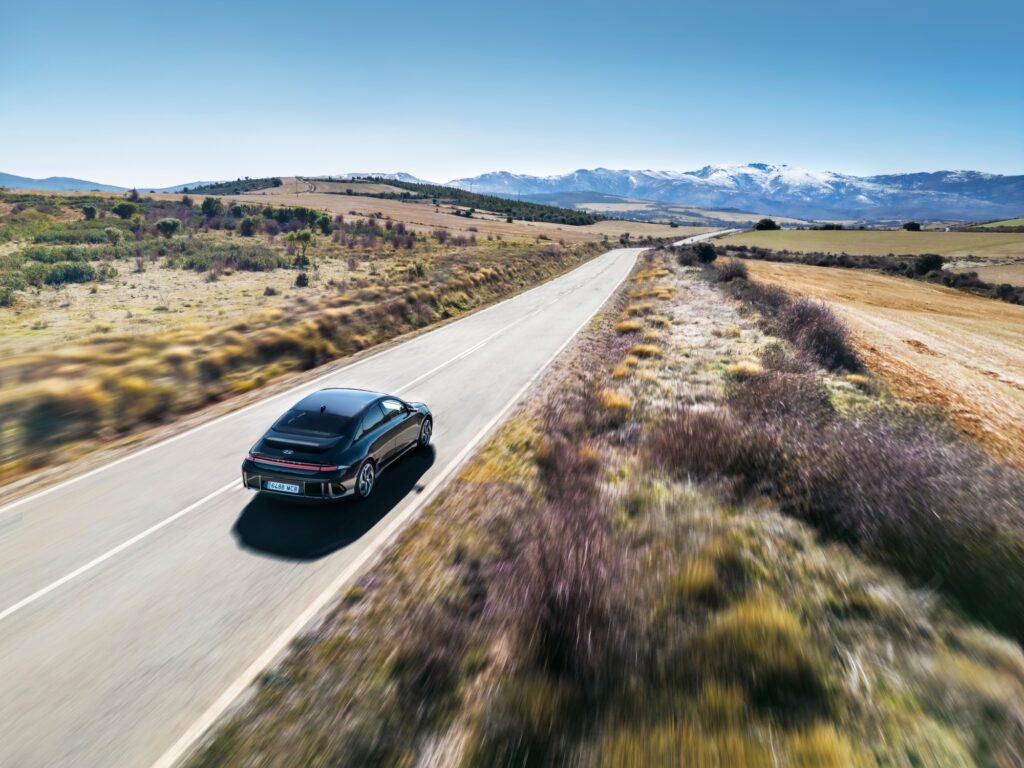



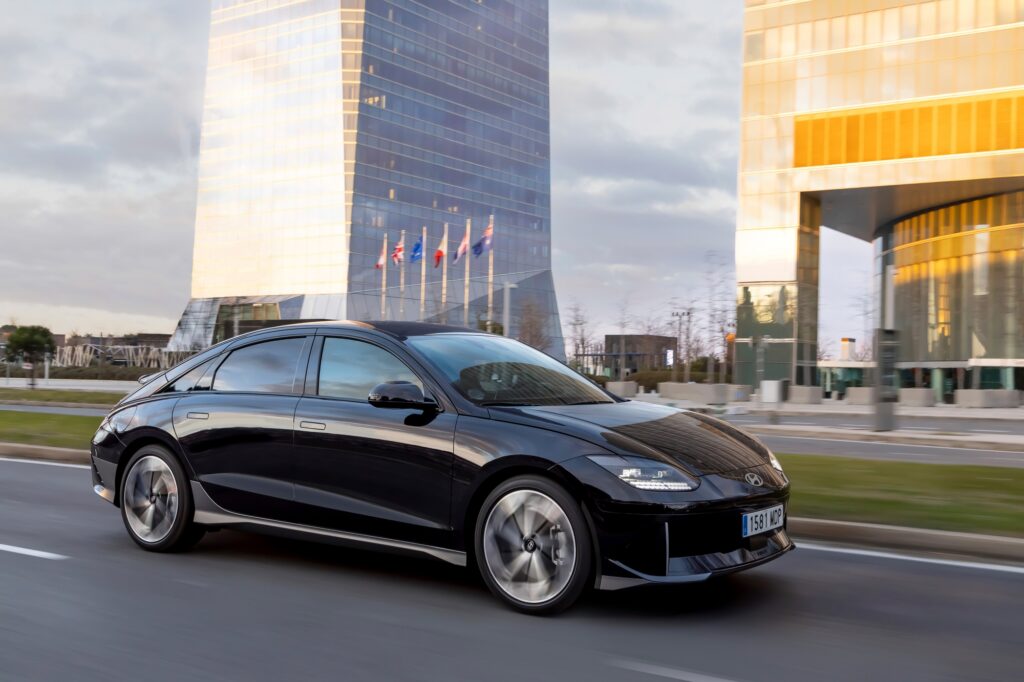
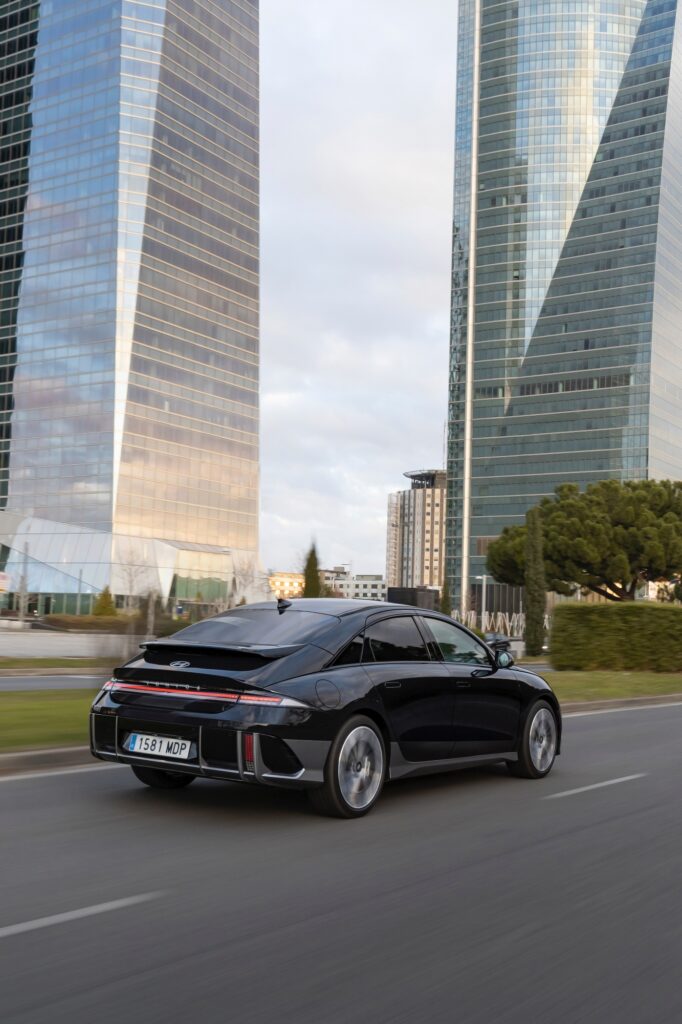




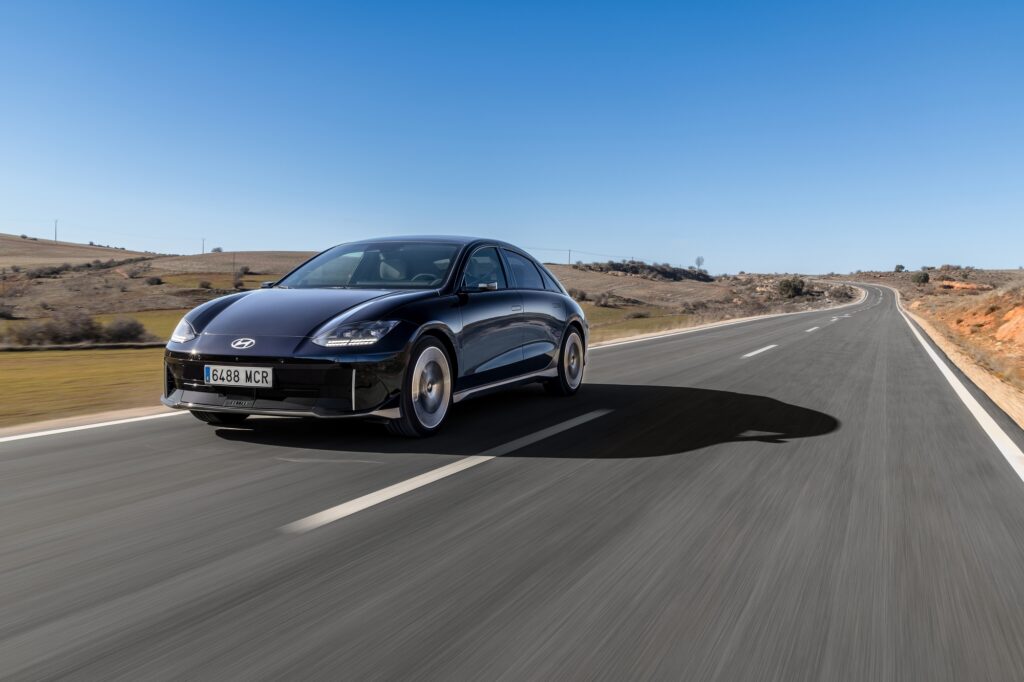
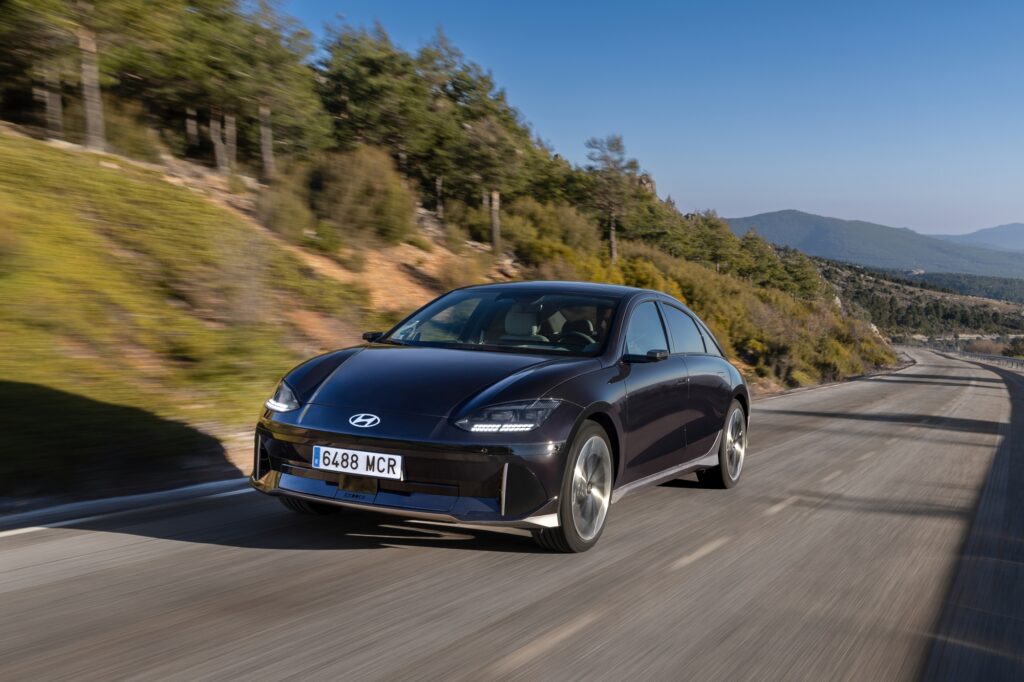








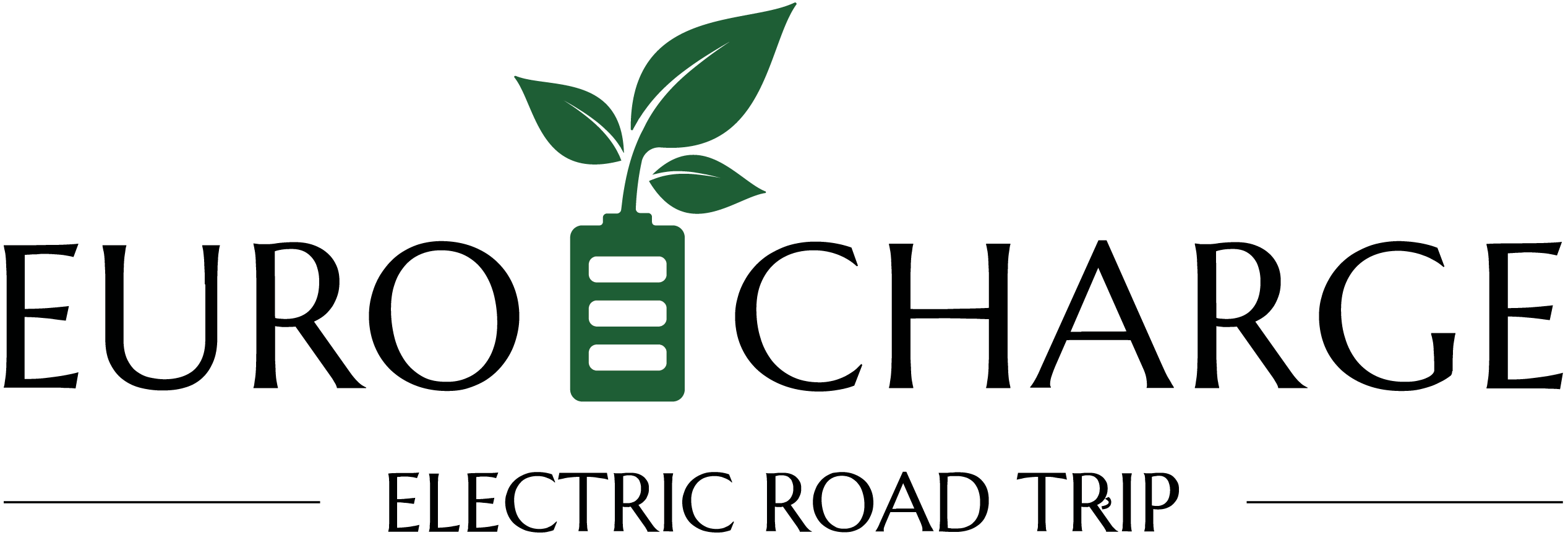
is a project backed by SCHAEFFLER
Charged by
OMV eMotion and Renovatio e-charge
Green Partner
Autonom
Charging stations
MOON România
On the road with
Michelin
Powered by
Server Config

